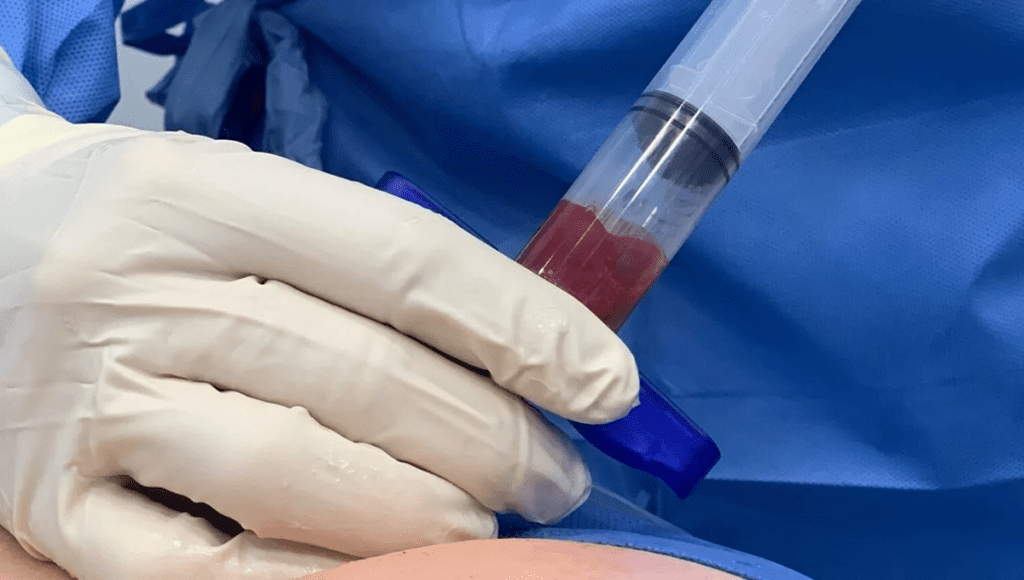
Non-Surgical Blog
Exploring Effectiveness: Do Stem Cell Injections Work?
May 19, 2025

Key Highlights
- Stem cell injections are at the forefront of regenerative medicine, offering potential treatments for a wide array of diseases.
- This therapy harnesses the power of stem cells, which can develop into various cell types, to repair damaged tissues and organs.
- It’s crucial to consult with healthcare providers to understand potential benefits, risks, and the regulatory landscape surrounding stem cell treatments.
- Costs, treatment longevity, and the need for multiple injections vary depending on the specific condition and the individual patient.
- Thorough research and understanding of the procedure, potential outcomes, and associated risks are vital when considering stem cell injections.
Overview
This innovative approach, harnessing the regenerative capabilities of stem cells, aims to treat a diverse range of diseases and injuries. The effectiveness of stem cell injections is a subject of ongoing clinical trials and research as scientists strive to understand their full potential and limitations.
This article will discuss the science behind stem cell injections, their applications, and the latest findings on their effectiveness.
Understanding Stem Cell Therapy
Stem cell therapy centers around the unique properties of stem cells, which are undifferentiated cells capable of differentiating into various specialized cell types. These cells are the foundation for every cell in the body, playing a crucial role in growth, development, and tissue repair. In the context of stem cell therapy, these powerful cells are extracted, processed, and introduced into the body to target damaged tissues or organs.
The goal is to utilize the stem cells’ regenerative potential to promote healing, replace diseased cells, and ultimately improve the patient’s condition. This approach holds immense promise for conditions ranging from degenerative diseases like osteoarthritis to injuries like spinal cord damage, but a clear understanding of the science and ongoing research is essential.
Defining Stem Cells and Their Importance
Stem cells stand out in the world of regenerative medicine due to their unique characteristics. Unlike other cells, stem cells have the remarkable ability to develop into various types of cells in the body. This ‘blank slate’ quality allows them to become muscle cells, blood cells, nerve cells, and more, depending on the signals they receive.
This versatility makes stem cells incredibly valuable in the field of regenerative medicine. By understanding how to manipulate these cells, scientists and doctors aim to develop treatments for a wide range of diseases and injuries that were once thought to be irreversible. The potential to regenerate damaged heart tissue after a heart attack or repair cartilage in arthritic joints highlights the transformative nature of stem cells in modern medicine.
Research continues to uncover the intricacies of stem cell behavior, and as our understanding deepens, so too does the potential for groundbreaking therapies that could revolutionize how we treat disease and injury.
The Different Types of Stem Cells and Their Sources
Embryonic stem cells, as their name suggests, originate from embryos in the early stages of development. They possess the remarkable ability to differentiate into any cell type in the body, making them incredibly versatile. However, the use of embryonic stem cells remains ethically complex and subject to ongoing debate.
Adult stem cells, found in small numbers within various tissues and organs even after birth, offer a less controversial source. These stem cells play a crucial role in the body’s natural repair mechanisms. While not as versatile as embryonic stem cells, adult stem cells can still differentiate into a range of cell types relevant to their tissue of origin. Bone marrow, adipose tissue, and umbilical cord blood are common sources for adult stem cells used in research and therapies.
Each type of stem cell presents its own set of advantages and challenges, and researchers continue to explore their unique properties and therapeutic applications. As our understanding of stem cell biology evolves, so too will the methods for harnessing their regenerative potential for medical advancements.
The Science Behind Stem Cell Injections
Stem cell injections work by leveraging the inherent ability of stem cells to transform into specialized cell types and encourage the body’s natural healing response. Once introduced into the target area, these stem cells can integrate with existing tissue, differentiate into needed cells, and release growth factors that stimulate repair and regeneration.
This targeted delivery allows for localized healing and avoids the systemic effects often associated with other treatment methods. The hope is that this approach can address the underlying cause of the condition, providing long-term relief and improving quality of life for patients.
How Stem Cell Injections Are Administered
The administration of stem cell injections is a meticulous process, ensuring both the safety and efficacy of the treatment. The journey starts with the extraction of healthy stem cells from the patient or a donor. Sources like bone marrow, adipose tissue, or umbilical cord blood are commonly used, and the specific source depends on the nature of the treatment and the patient’s individual needs.
Once extracted, these stem cells are carefully processed in a laboratory setting. This crucial step involves isolating and purifying the stem cells, ensuring a concentrated and viable population for injection. In some cases, the stem cells may be cultured and expanded to achieve the desired cell numbers.
The final step involves injecting the prepared stem cells directly into the target area, guided by imaging techniques like ultrasound or X-ray. This precision ensures accurate delivery of the cells to the site of injury or degeneration, maximizing their therapeutic potential. Throughout the process, a qualified healthcare provider closely monitors the patient, addressing any concerns and ensuring their well-being.
Mechanisms of Action: What Happens at the Cellular Level?
Following injection, the stem cells begin a complex process of integration and differentiation, guided by the body’s natural healing cues. These cells, sensing the surrounding environment, are capable of transforming into the cell types needed for repair, whether they be muscle cells, bone cells, cartilage, or other types of tissue.
This incredible transformation allows the injected stem cells to replace damaged or diseased cells, effectively rebuilding the injured area. Beyond direct cell replacement, these stem cells also release a cocktail of beneficial growth factors and signaling molecules that further stimulate the body’s inherent healing mechanisms.
This combination of actions – cell differentiation, integration, and growth factor release – promotes the formation of new blood vessels, attracts other reparative cells to the site, and ultimately leads to the regeneration of healthy, functional tissue. While the exact mechanisms are still under investigation, this regenerative cascade is at the heart of stem cell therapy’s potential.
Applications of Stem Cell Injections in Medicine
The versatility of stem cell injections has unlocked their potential applications in treating a growing list of medical conditions. These therapies offer hope for patients with conditions that have traditionally proven challenging, such as degenerative diseases, autoimmune disorders, and certain types of cancers.
From orthopedic conditions like osteoarthritis and sports injuries to autoimmune diseases like multiple sclerosis and even cardiovascular diseases, stem cell injections are being investigated as a potential treatment avenue across numerous medical specialties. While still an evolving field, the applications of stem cell injections continue to expand as research progresses.
Treating Orthopedic Conditions with Stem Cells
Stem cell injections have shown particular promise in orthopedics, targeting conditions that affect joints, cartilage, and bones. For individuals suffering from osteoarthritis, where the cushioning cartilage in joints degrades, these injections offer hope for repairing damaged tissue and alleviating pain. By delivering stem cells directly to the affected joint, the goal is to stimulate cartilage regeneration, reduce inflammation, and improve joint function.
Similarly, stem cell injections are being explored as a treatment option for sports-related injuries, such as ligament tears or tendonitis. The injected stem cells have the potential to differentiate into tendon or ligament cells, promoting healing and restoring mobility.
While stem cell injections alone may not be a complete cure, they are often used in conjunction with other therapies, such as physical therapy and pain management strategies, for a comprehensive approach to orthopedic care. The goal is to provide pain relief, restore function, and improve the overall quality of life for individuals experiencing orthopedic issues.
Stem Cell Therapy in Regenerative Medicine
Stem cell therapy is a central focus in the rapidly advancing field of regenerative medicine, with potential applications extending far beyond orthopedics. Researchers and clinicians are continuously exploring novel ways to utilize these potent cells to address various medical challenges, with a goal of not simply treating symptoms but actually repairing and regenerating damaged tissues and organs.
The ability of stem cells to differentiate into various cell types makes them a powerful tool in this endeavor. Current research is exploring their use in treating conditions like heart disease, where stem cells could regenerate damaged heart muscle, and neurodegenerative diseases like Parkinson’s disease, where they could potentially replace lost neurons.
While much research is still in its early stages, the future of medicine is undeniably intertwined with the advancements in stem cell therapy. As scientists continue to unravel the intricacies of stem cell behavior and develop safer and more effective methods of delivery and control, the hope is that stem cell therapy will revolutionize the treatment of a wide range of diseases and injuries, offering new hope for patients worldwide.
Evaluating the Effectiveness of Stem Cell Therapy
The effectiveness of stem cell therapy is a topic of ongoing research and clinical trials. While promising results have emerged from early studies, further investigation is crucial to solidify its place as a mainstream treatment for a wide range of conditions. Researchers are working diligently to standardize protocols, optimize cell sources, and determine long-term efficacy.
Evaluating the true effectiveness of stem cell therapy requires a multi-faceted approach, encompassing rigorous clinical trials, long-term follow-up studies, and standardized protocols for treatment administration. As the field advances, a more comprehensive understanding of its effectiveness for specific conditions will emerge, guiding treatment decisions and shaping the future of regenerative medicine.
Success Stories: When Stem Cell Therapy Works
While stem cell therapy is still considered experimental for many conditions, there is growing evidence of its success in certain areas. Clinical trials have demonstrated promising results in using stem cells to treat blood disorders like leukemia and lymphoma. Bone marrow transplants, a form of stem cell therapy, have been a standard treatment for these diseases for several years, demonstrating the potential of these powerful cells in replacing diseased blood cells and restoring healthy blood production.
Similarly, stem cell injections have shown positive outcomes in treating certain orthopedic conditions. Studies have reported pain reduction, improved joint function, and cartilage regeneration in patients with osteoarthritis who underwent stem cell therapy. While larger trials are necessary to confirm these findings, early results provide hope for those seeking alternatives to traditional treatments like joint replacement surgery.
It’s important to note that the success of stem cell therapy depends on various factors, including the specific condition being treated, the overall health of the patient, and the experience of the healthcare provider. Consulting with a qualified medical professional is crucial to determine if stem cell therapy is an appropriate treatment option and to discuss potential risks and benefits.
Reviewing Scientific Evidence on Stem Cell Effectiveness
Scientific research on stem cell therapy is continually expanding, with clinical trials playing a pivotal role in determining its effectiveness for various conditions. While significant progress has been made, it’s essential to acknowledge that many applications are still in experimental phases. Rigorous scientific evidence is crucial to differentiate between hype and genuine therapeutic potential.
Clinical trials are underway to evaluate the effectiveness of adult stem cell therapy for conditions ranging from heart disease and diabetes to spinal cord injuries and autoimmune disorders. Initial findings are promising, but larger, long-term studies are needed to confirm these results and establish standardized treatment protocols.
The table below highlights some areas where stem cell therapy has shown potential but emphasizes that more research and clinical trials are necessary:
| Condition | Current Status |
| Blood Disorders | Proven effective for certain types of leukemia and lymphoma; bone marrow transplants are standard treatment. |
| Osteoarthritis | Promising results in early clinical trials for pain relief and cartilage regeneration; larger studies ongoing. |
| Heart Disease | Early research suggests potential for regenerating heart muscle, but more trials are needed to confirm benefits. |
| Spinal Cord Injuries | Preclinical studies and early clinical trials show some promise, but long-term effectiveness remains uncertain. |
Final Thoughts
Stem cell injections show promise in various medical fields, with success stories and ongoing research highlighting their potential benefits. While risks and ethical considerations exist, the effectiveness of stem cell therapy cannot be denied. Understanding the science behind stem cells and their applications is crucial in evaluating their impact.
If you are considering this innovative therapy, it is essential to consult experts and weigh the risks and benefits. For more information or to discuss the applicability of stem cell injections for your condition, feel free to get in touch with us.
Frequently Asked Questions
What conditions have shown improvement with stem cell injections?
Stem cell injections have shown promise in addressing a range of conditions. Early research indicates potential benefits for conditions such as joint pain (including osteoarthritis), rotator cuff tears, and spinal cord injuries. Additional research is exploring their potential in addressing Parkinson’s disease and blood cancers.

Search our blog posts: